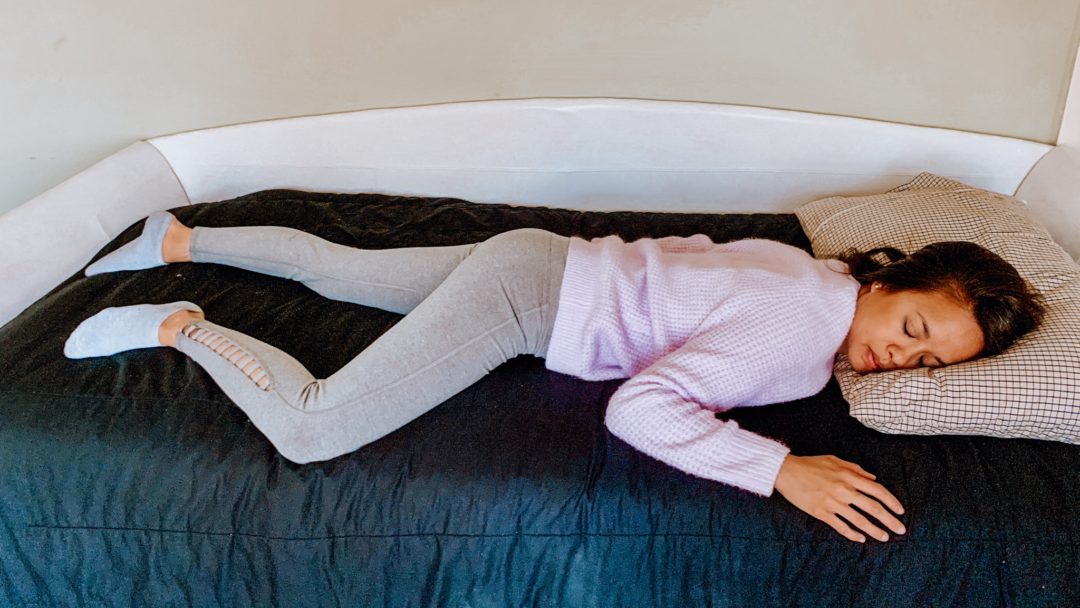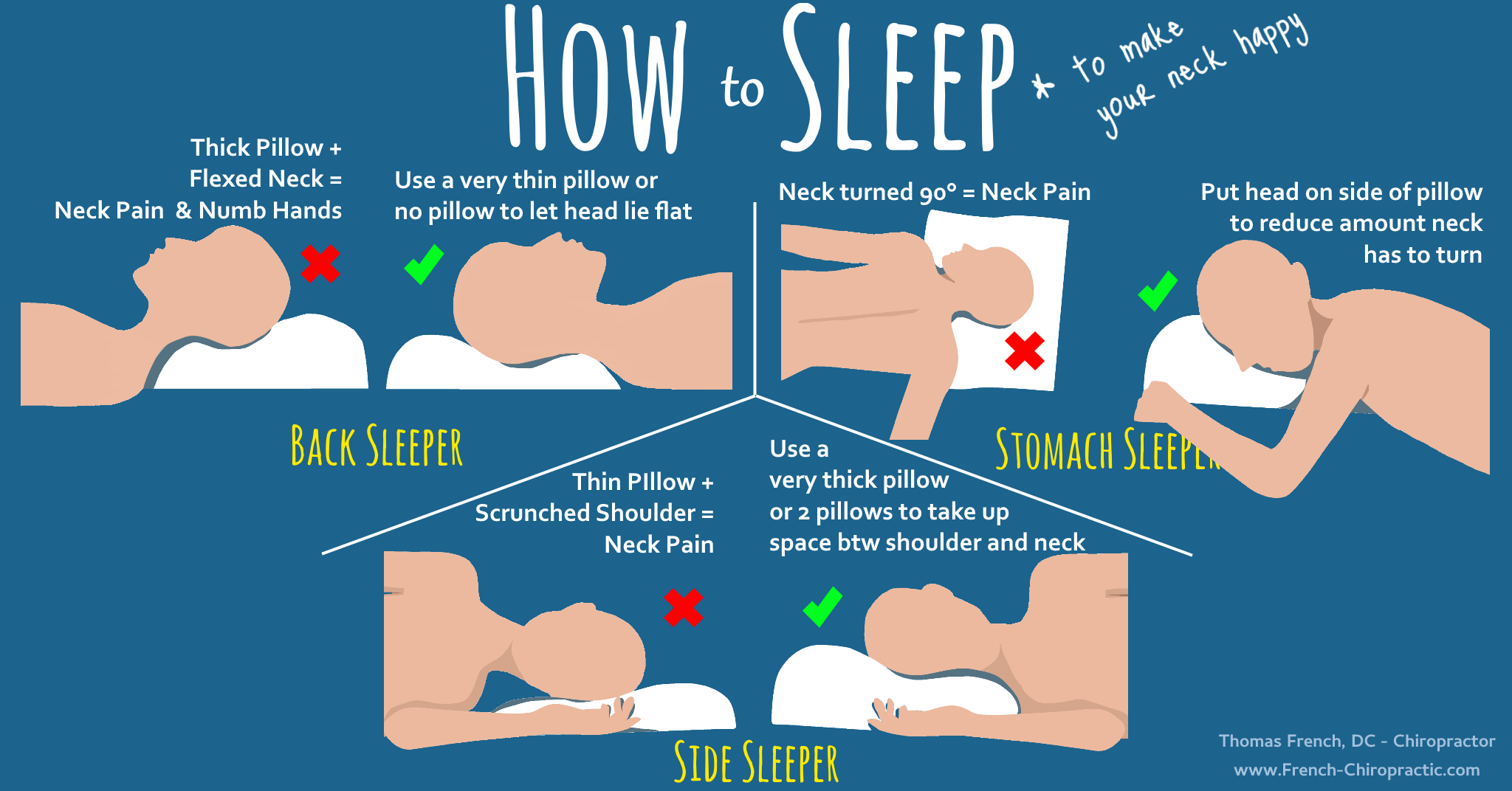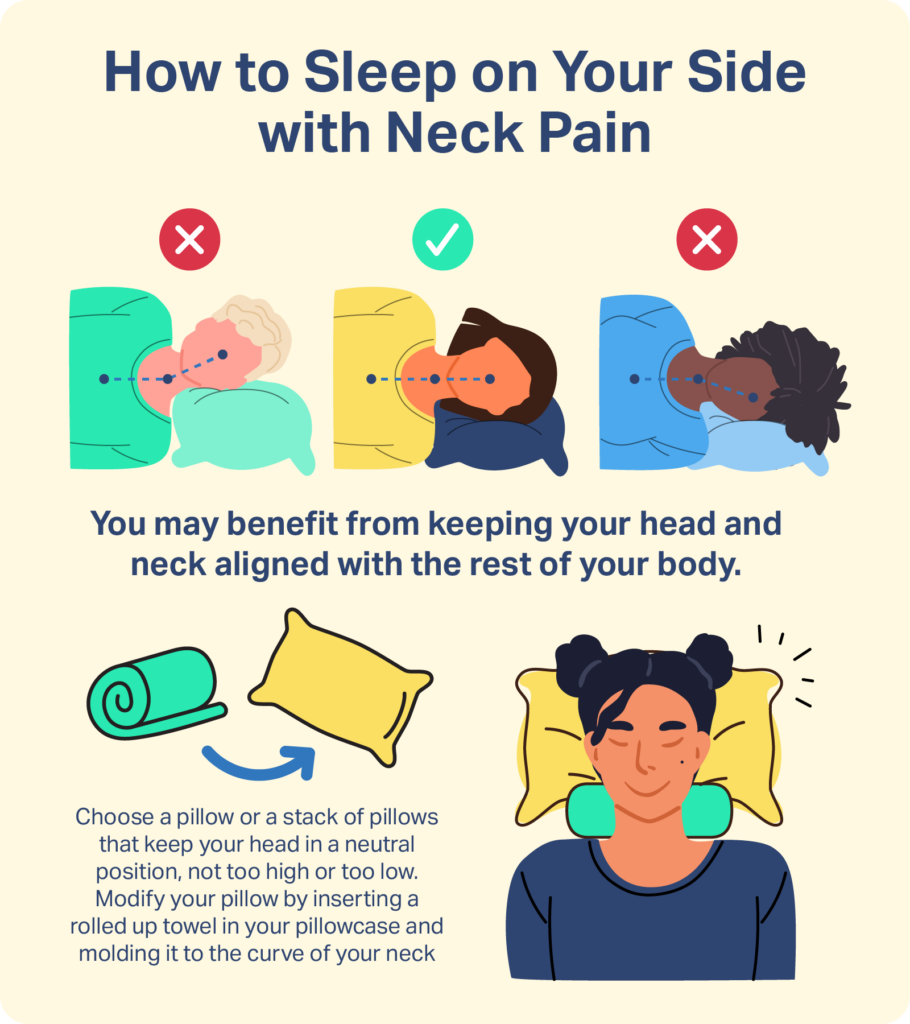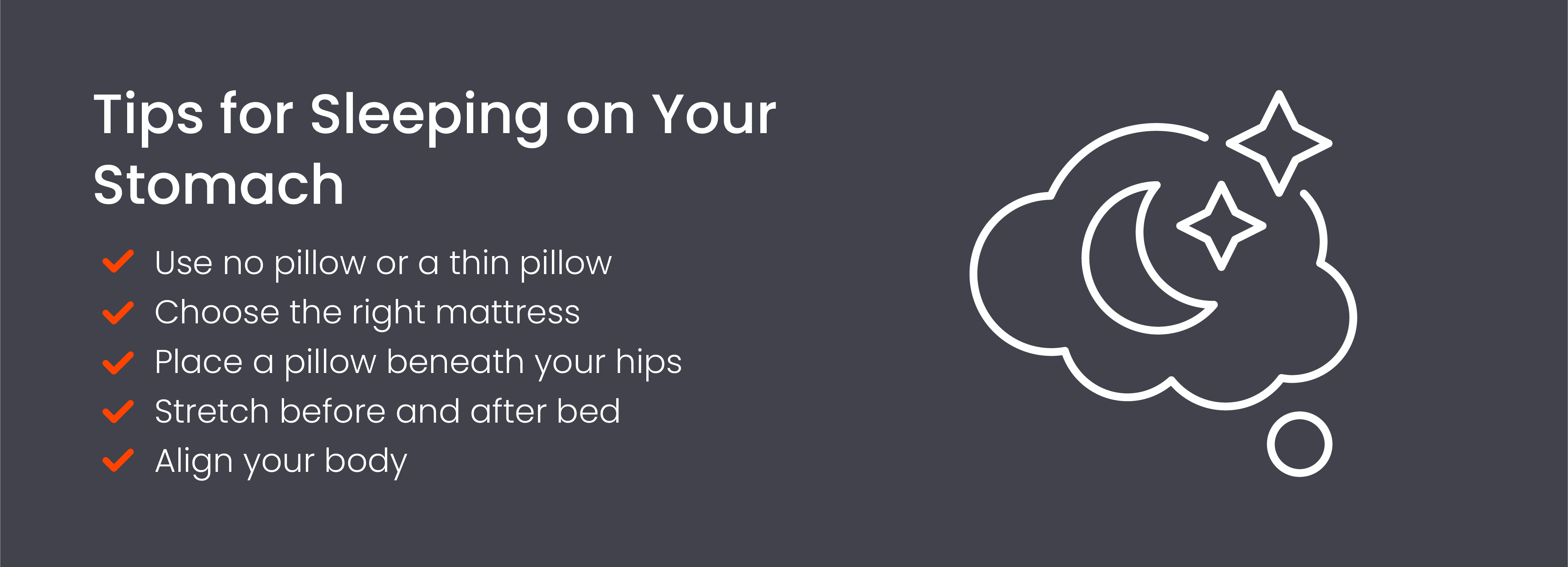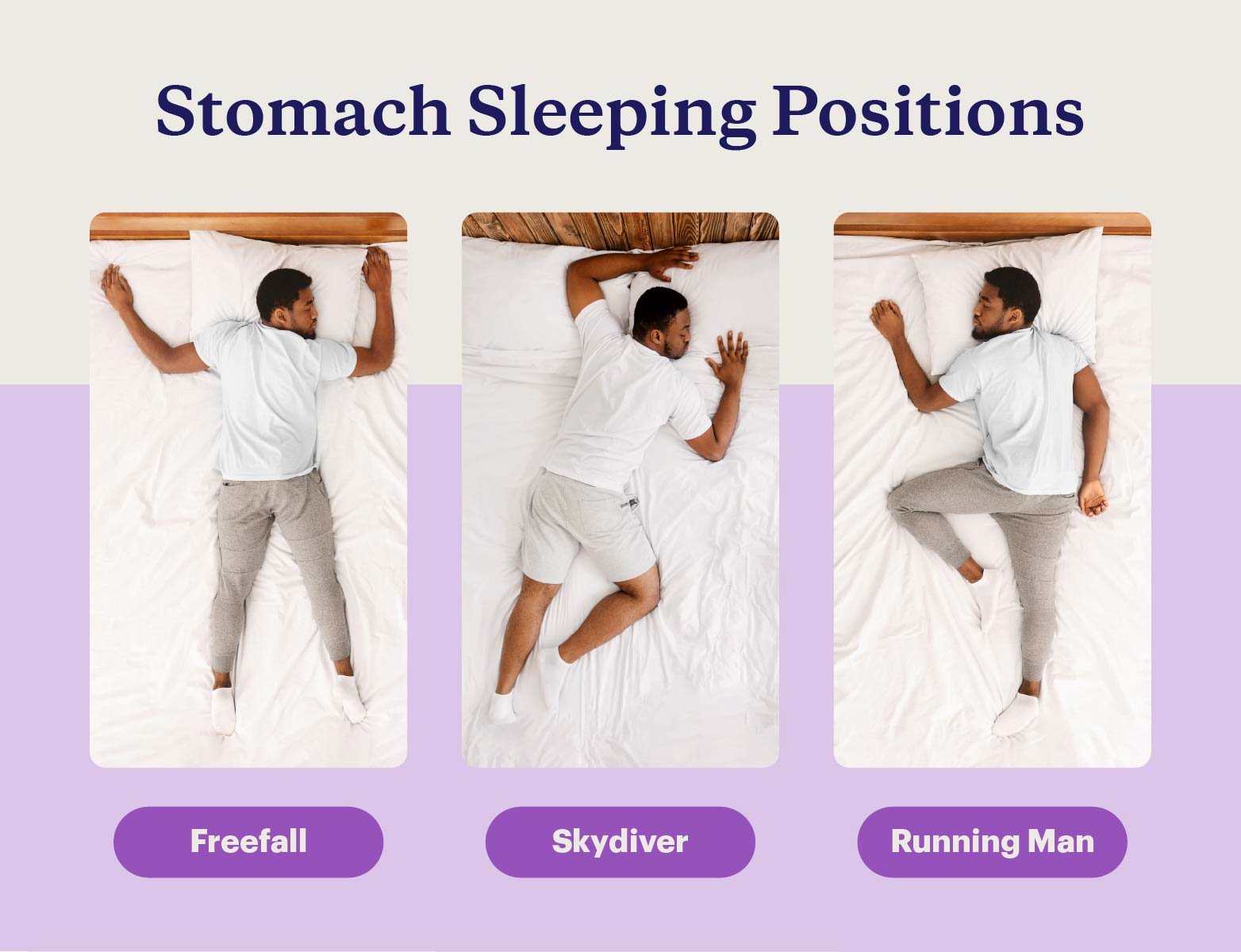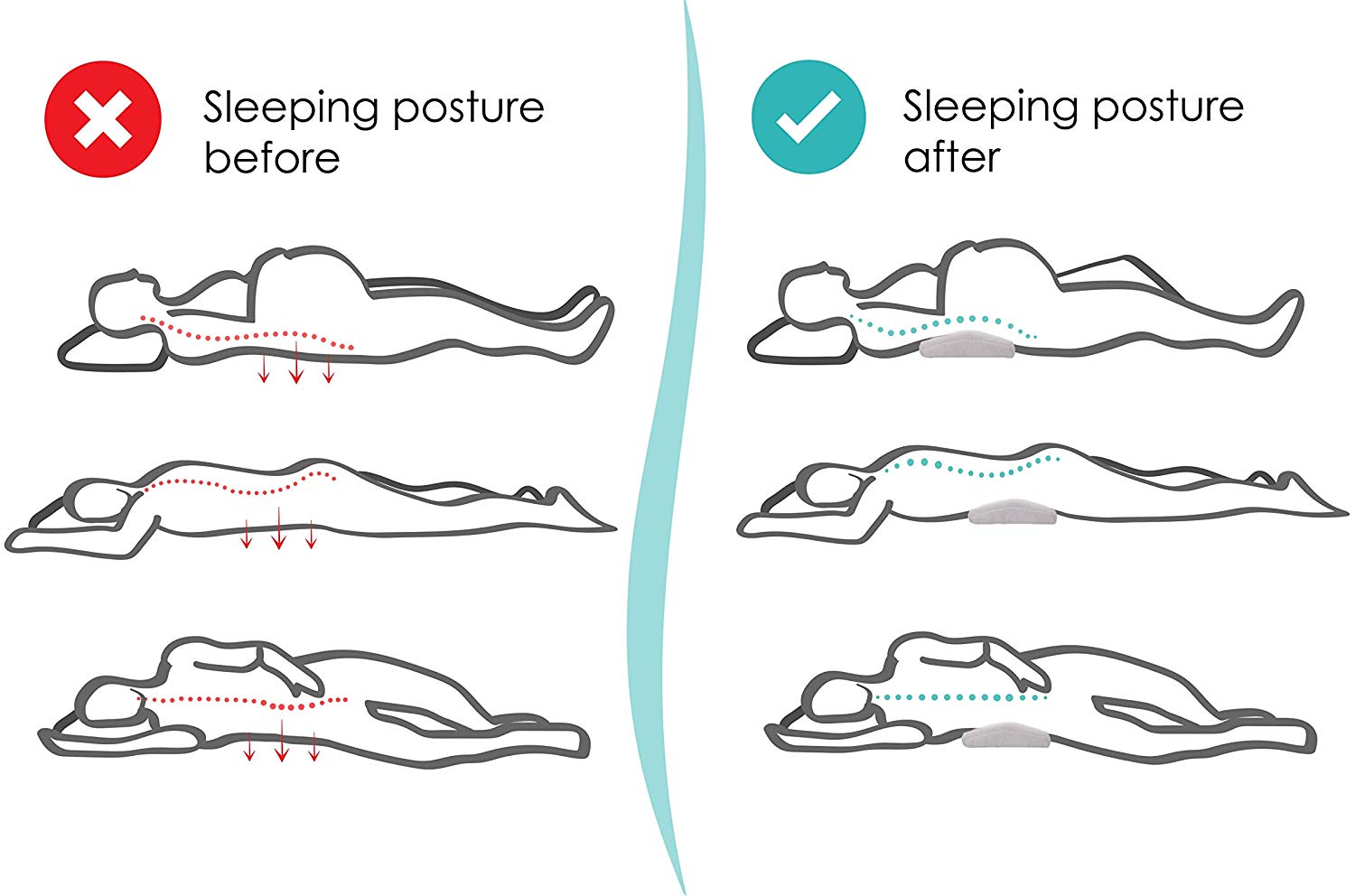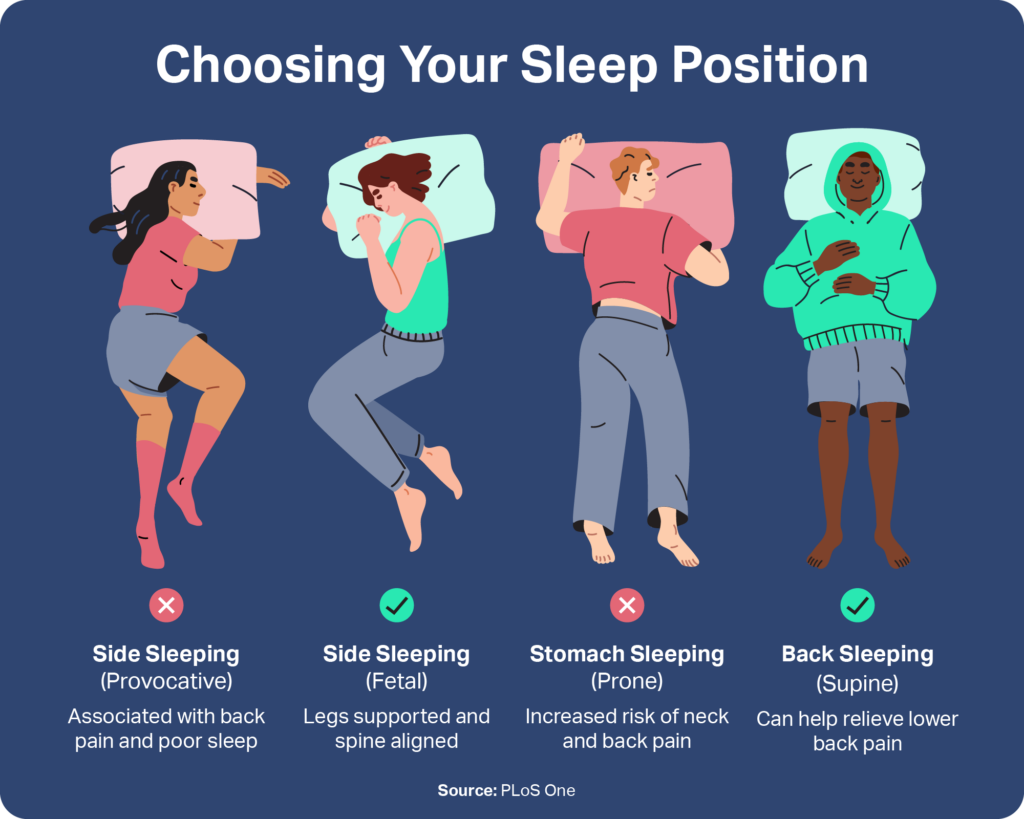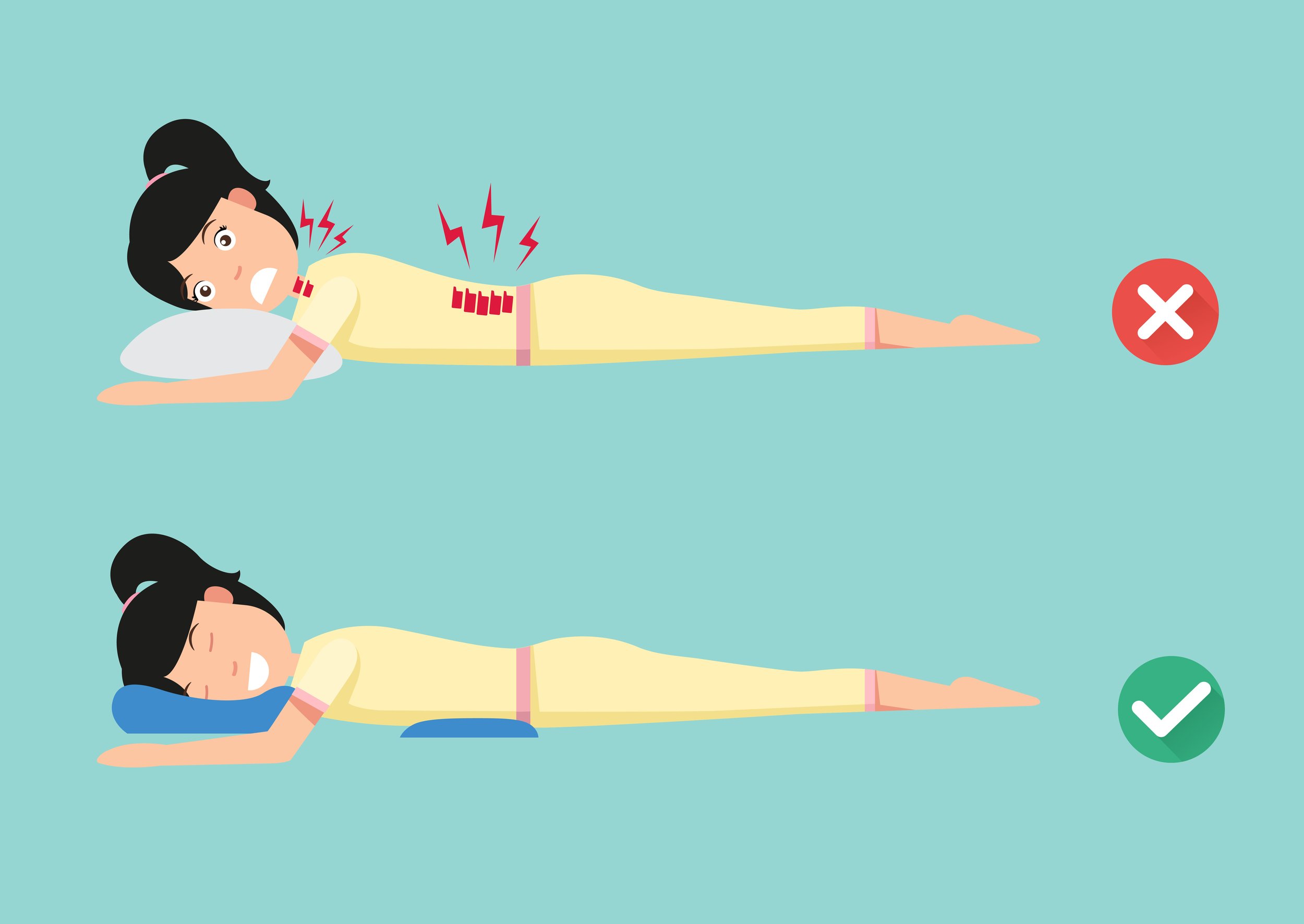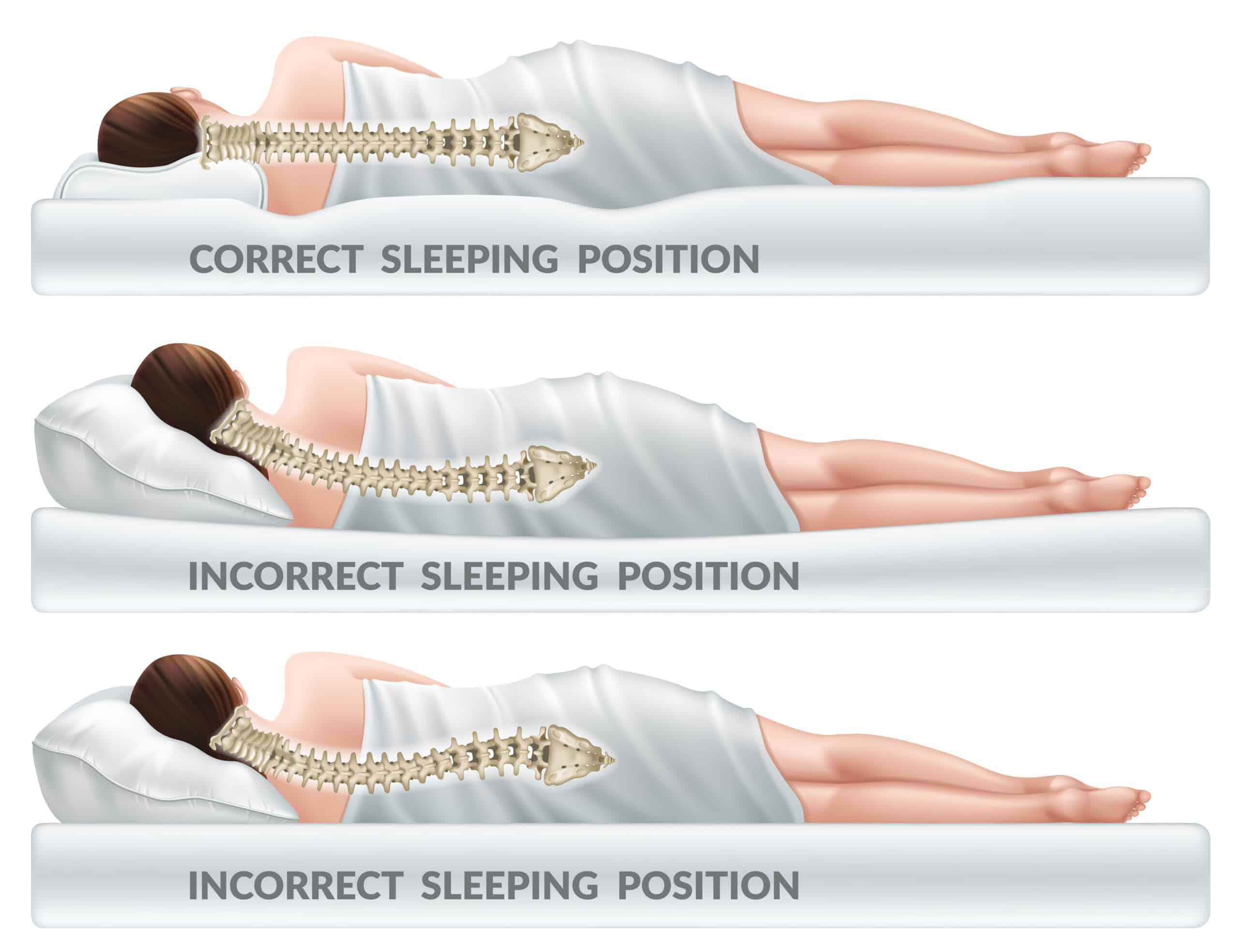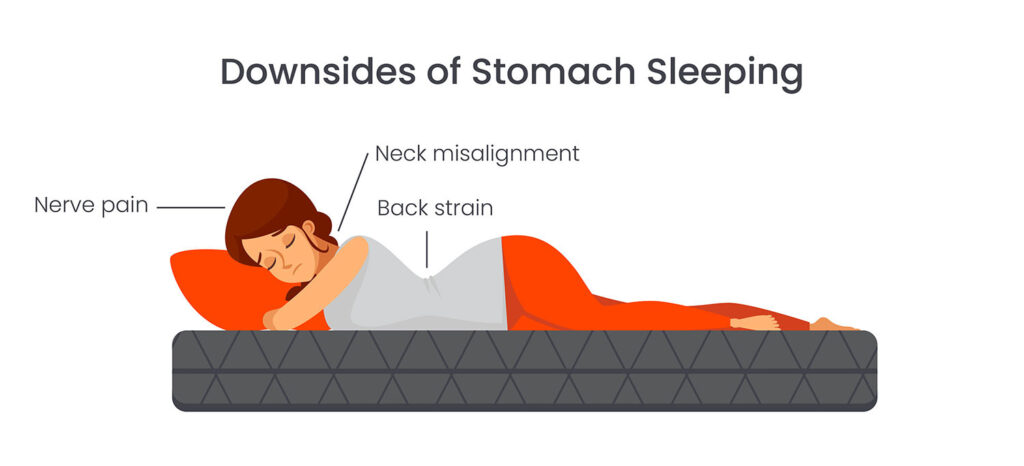How To Sleep On Stomach Without Hurting Neck

The morning sun streams through your window, painting stripes across your face. You stretch, a long, luxurious extension of limbs, and then… a sharp twinge in your neck. The culprit? That beloved, yet often berated, stomach sleeping position.
Sleeping on your stomach, while offering a sense of security and sometimes aiding with snoring, can wreak havoc on your neck. But don't despair, stomach sleepers! This article provides practical strategies to minimize neck pain and reclaim comfortable, pain-free slumber.
The Perils of Prone Position
Sleeping on your stomach inherently forces your head to turn to one side for extended periods. This unnatural twist puts immense strain on the neck muscles, ligaments, and spinal discs.
Imagine holding your head turned to one side for eight hours straight during the day. That's precisely what happens when you sleep on your stomach, leading to morning stiffness, pain, and potentially long-term issues.
Why Do We Do It?
Despite its potential drawbacks, many people find stomach sleeping incredibly comforting. Some find it helps alleviate snoring or sleep apnea, although research suggests this isn't a universal benefit.
Others simply find the pressure on their abdomen soothing, creating a sense of security. Old habits die hard, and for many, stomach sleeping has been a lifelong preference.
Strategies for Stomach Sleepers: Minimizing the Damage
If completely changing your sleep position is not an option, several modifications can significantly reduce the strain on your neck. These include using a thin pillow, adjusting your pillow placement, stretching, and strengthening exercises.
The Thin Pillow Advantage
The most crucial adjustment is often your pillow. A thick pillow elevates your head, exacerbating the neck strain caused by the head turn.
Opt for an ultra-thin pillow or even no pillow at all. This allows your head and neck to remain as close to a neutral alignment as possible.
Pillow Placement and Support
Instead of placing the pillow directly under your head, try positioning it under your forehead. This allows you to keep your head and neck more aligned with your spine, reducing the extreme rotation.
Some people find placing a thin pillow under their hips can also improve spinal alignment and reduce lower back strain. Experiment to find what works best for you.
Stretching and Strengthening
Regular stretching and strengthening exercises can counteract the negative effects of stomach sleeping. Focus on exercises that improve neck flexibility and strengthen the supporting muscles.
Neck stretches, such as gentle head tilts and rotations, can help release tension. Simple exercises like chin tucks strengthen the deep neck flexor muscles, promoting better posture.
A physical therapist can provide personalized guidance on exercises tailored to your specific needs. Don't underestimate the power of professional advice.
Transitioning to Side or Back Sleeping
While modifying your stomach sleeping posture is helpful, ultimately, transitioning to side or back sleeping is the most effective way to protect your neck. This shift requires patience and persistence.
Start by consciously choosing a different position as you fall asleep. Use pillows to support your body and prevent you from rolling onto your stomach during the night.
You can create a barrier with pillows behind your back when attempting back sleeping. This prevents you from turning over onto your stomach during sleep.
The Role of Bedding
Your mattress and bedding play a role in your overall sleep posture. A supportive mattress that contours to your body helps maintain spinal alignment, regardless of your preferred sleeping position.
Consider investing in a mattress topper designed to provide additional support and comfort. A memory foam topper can distribute weight evenly and reduce pressure points.
Consulting a Professional
If you experience chronic neck pain despite making these adjustments, consult a healthcare professional. A doctor or physical therapist can diagnose the underlying cause of your pain and recommend appropriate treatment.
They can also rule out any underlying conditions that may be contributing to your discomfort. Early intervention is key to preventing long-term problems.
Debunking Myths and Addressing Concerns
There are several common misconceptions about stomach sleeping. One myth is that it's always bad for everyone. While it's generally not recommended, some individuals may experience less discomfort than others.
Another misconception is that you can completely eliminate neck pain overnight. Changing your sleep habits takes time and consistent effort.
The Importance of a Holistic Approach
Addressing neck pain requires a holistic approach that considers various factors. Your sleeping position is only one piece of the puzzle. Consider factors like your posture during the day, stress levels, and overall health.
Regular exercise, a healthy diet, and stress-reduction techniques can all contribute to a healthier spine and a more restful night's sleep. A good night's sleep is a cornerstone of overall well-being.
The Verdict
While stomach sleeping isn't ideal for your neck, it's possible to minimize the damage with the right strategies. Prioritize a thin pillow, experiment with pillow placement, and incorporate stretching and strengthening exercises into your routine.
Ultimately, transitioning to side or back sleeping is the best long-term solution for preventing neck pain. Be patient with yourself, and celebrate small victories along the way.
A good night's sleep shouldn't come at the cost of morning pain. By understanding the risks of stomach sleeping and taking proactive steps, you can enjoy comfortable, pain-free slumber.


